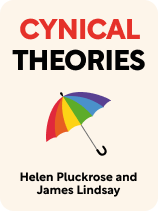

This article is an excerpt from the Shortform book guide to "Cynical Theories" by Helen Pluckrose and James Lindsay. Shortform has the world's best summaries and analyses of books you should be reading.
Like this article? Sign up for a free trial here.
Are gender and sexuality cultural or biological? Is fatness unhealthy, or is that just a cultural narrative?
In Cynical Theories, Helen Pluckrose and James Lindsay contend that social justice scholarship and activism changed from a force for good to a dangerous movement. One of the ways in which it’s a threat, they say, is the movement’s rejection of science in order to advance its agenda.
Keep reading to learn about the anti-science positions of the Social Justice Movement.
The Social Justice Movement Rejects Science
Pluckrose and Lindsay discuss the various ways that the Social Justice Movement’s ideology rejects science. The authors argue this anti-science position is counterproductive, as scientific research provides the understanding necessary to improve people’s lives in concrete ways.
(Shortform note: Though Pluckrose and Lindsay mainly focus on areas where scientific research and the Social Justice Movement conflict, other critics of the Social Justice Movement suggest it’s negatively influencing science instead of rejecting it entirely. These critics note many math and science institutions have adopted certain ideals of the Social Justice Movement: Requiring diversity, focusing on women and non-Europeans in the history of science, and accepting the idea that the scientific method is inherently oppressive. While this influence is subtler than an outright rejection of science, critics of the Social Justice Movement believe it’s just as dangerous to society.)
Pluckrose and Lindsay cite two main areas as representing the Social Justice Movement’s rejection of science: (1) gender and sexuality and (2) disability and fatness.
Gender and Sexuality
Pluckrose and Lindsay explain that the Social Justice Movement believes gender and sexuality have nothing to do with biology, instead claiming that gender and sexuality are entirely culturally constructed narratives. Society determines what it means to be a certain gender, assigning certain activities, qualities, and things as signifiers of gender. Then, it assigns genders to people at birth and has them “perform” their gender through these signifiers. For example, a dress isn’t inherently feminine or womanly—it’s just pieces of fabric arranged in a certain way. But society decided to associate dresses with womanhood, and so now women and girls are encouraged to wear them to signify their gender.
The Social Justice Movement argues the narratives of gender and sexuality are inherently oppressive. People in power—cisgender straight men—use strict categories of gender and sexuality to define themselves as the “default” or “ideal,” and everyone else as “inferior” or “abnormal.” The Social Justice Movement believes science is often a tool of this oppression, used to argue straight, cisgender people are the norm and everyone else is disordered somehow. Therefore, the movement rejects science that claims gender and sexuality are based on inherent, objective qualities (genetic factors or brain chemistry, for example) rather than purely on cultural narratives, viewing this research as an attempt to legitimize oppressive cultural narratives.
(Shortform note: Many liberal and conservative skeptics of transgender rights tend to define what’s acceptable based on specific medical science versus cultural belief. For example, Douglas Murray (The Madness of Crowds) suggests some transgender people genuinely experience gender dysphoria and can benefit from gender-affirming medical treatments. However, he also argues cultural influences—like the Social Justice Movement—confuse others into thinking they want the same treatments or into rejecting the concept of gender altogether. Murray, therefore, believes society should create different categories to distinguish between genuinely transgender people and those who are just misled.)
Disability and Fatness
The Social Justice Movement views “healthy” and “unhealthy” as oppressive cultural narratives created by dominant groups in society—abled-bodied thin people, in this case—to label themselves as ideal or default and the disabled or fat as abnormal or inferior. They view attempts to treat or cure disabilities and fatness as part of this oppression since it is society enforcing the idea that it’s better to be able-bodied and thin than it is to be disabled and fat. In other words, it is society saying able-bodied thin people are superior to disabled and fat people. Therefore, the Social Justice Movement is skeptical or even hostile to scientific research trying to cure disabilities or prove why fatness is unhealthy.
(Shortform note: While Pluckrose and Lindsay argue the Social Justice Movement’s views on disability and fatness stand in contrast to scientific consensus, there is some evidence to suggest scientific opinion on these subjects is by no means unified or set in stone. For example, when the American Medical Association recognized obesity as a disease, they did so against the recommendation of their own research panel. In addition, the definition of disability remains in flux, seeing a number of changes in the legal and medical realms over the past several decades.)

———End of Preview———
Like what you just read? Read the rest of the world's best book summary and analysis of Helen Pluckrose and James Lindsay's "Cynical Theories" at Shortform.
Here's what you'll find in our full Cynical Theories summary:
- How and why modern advocacy has gone too far
- How social justice scholarship and activism has become dangerous
- Why freedom of speech and belief in science are more important than ever






